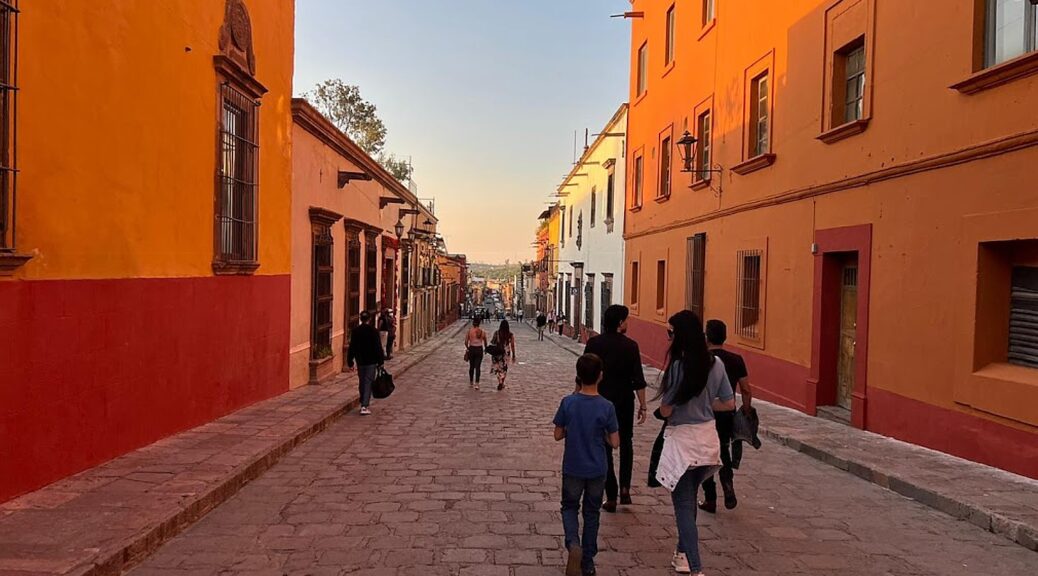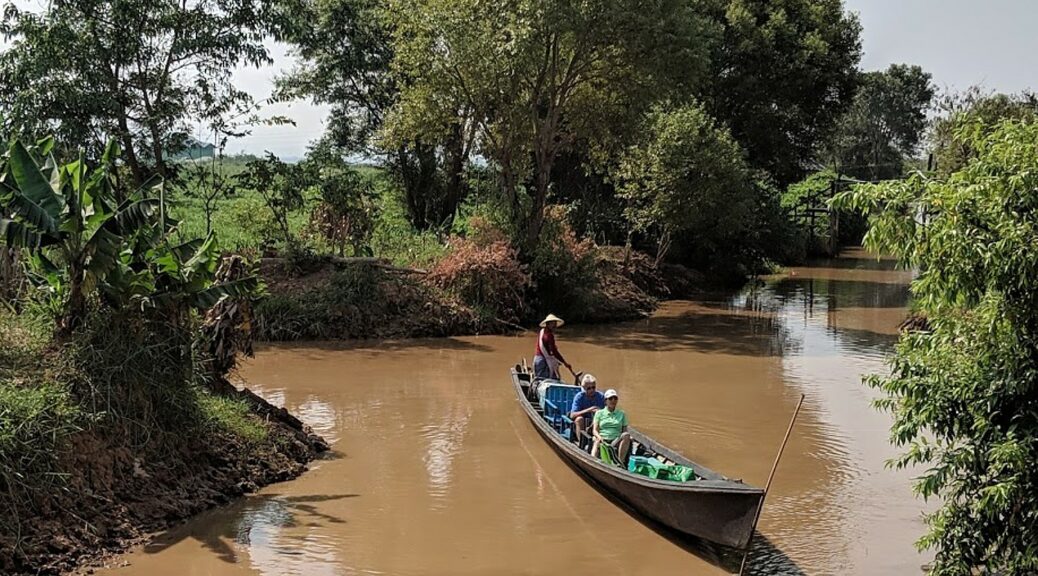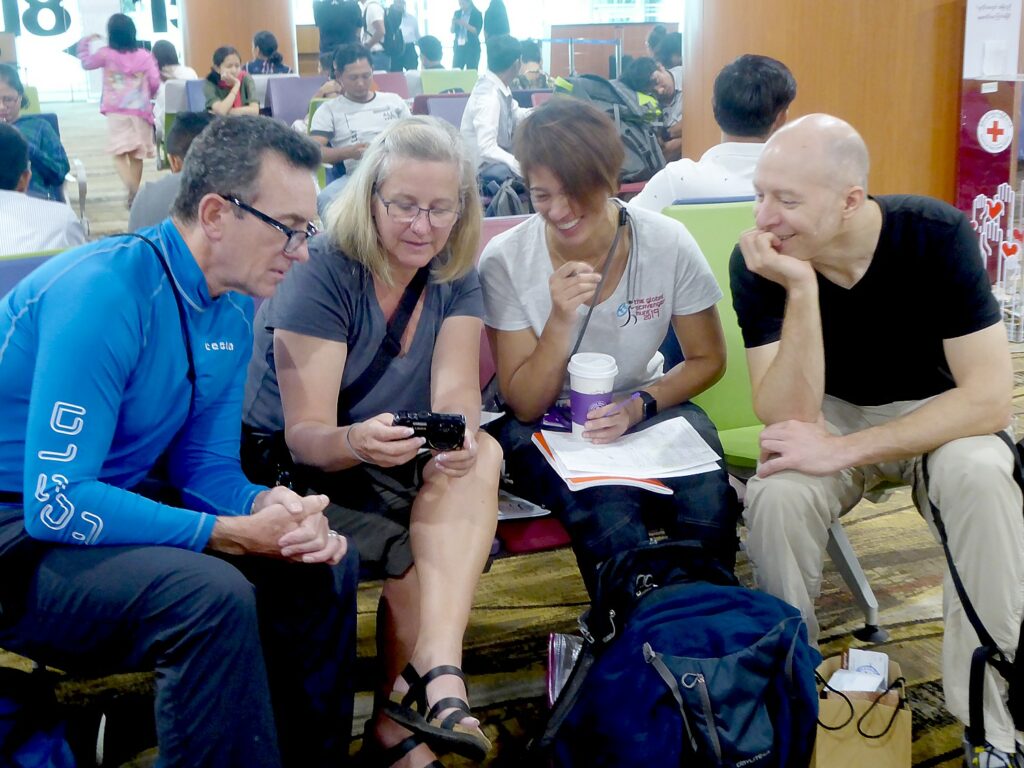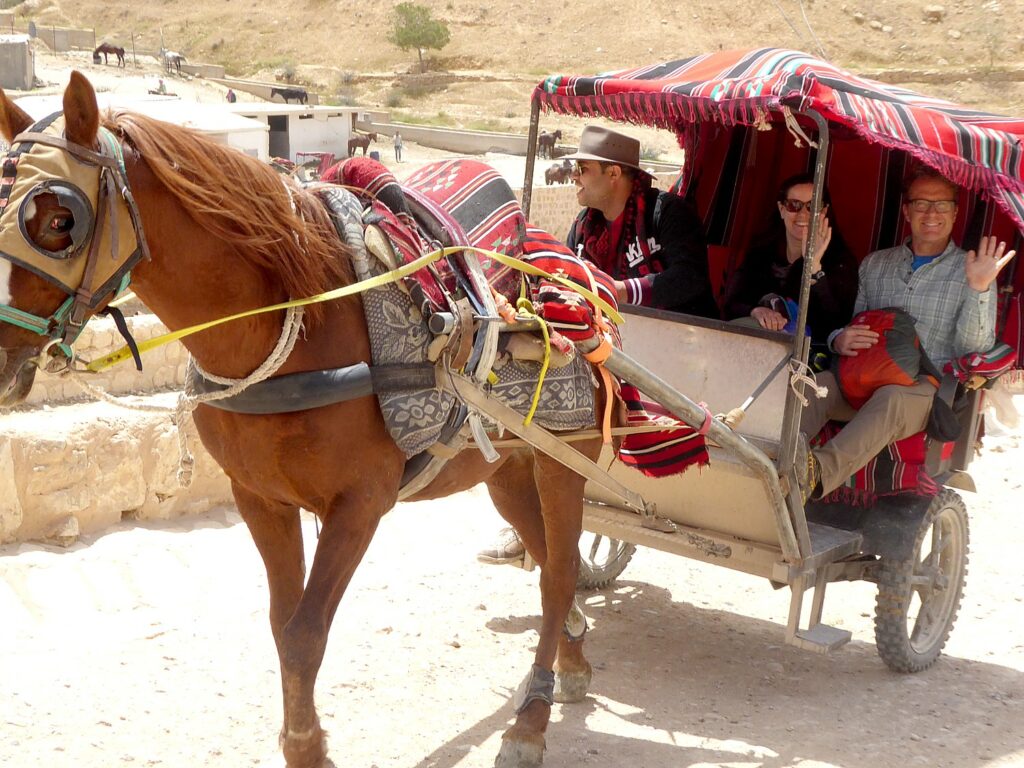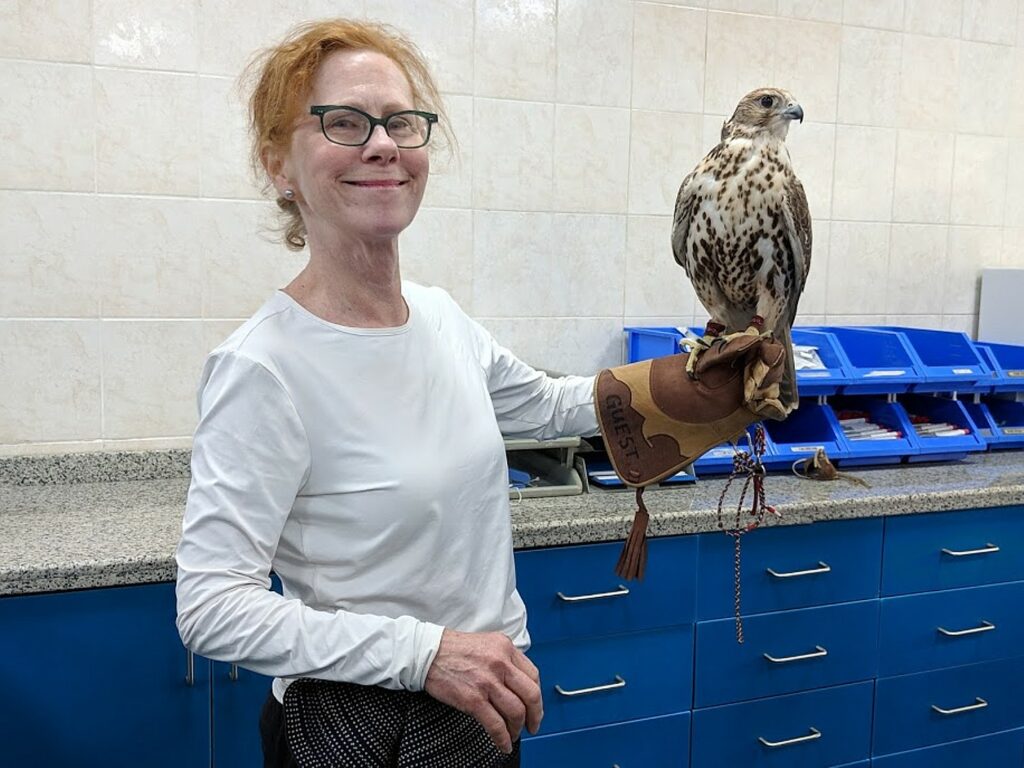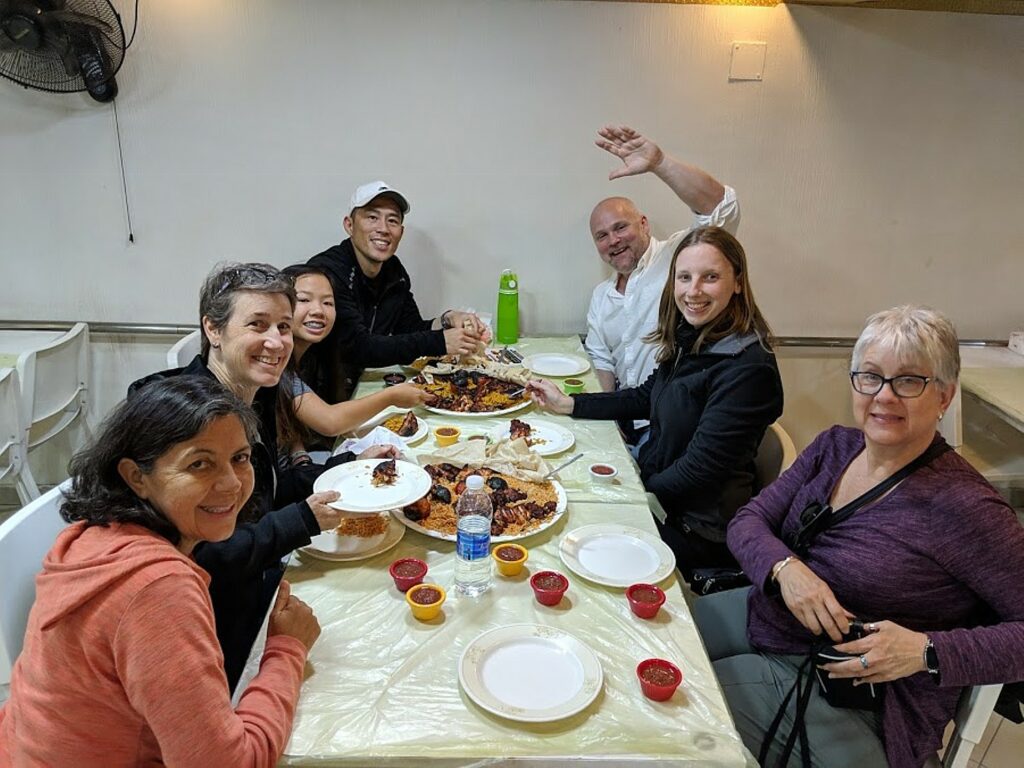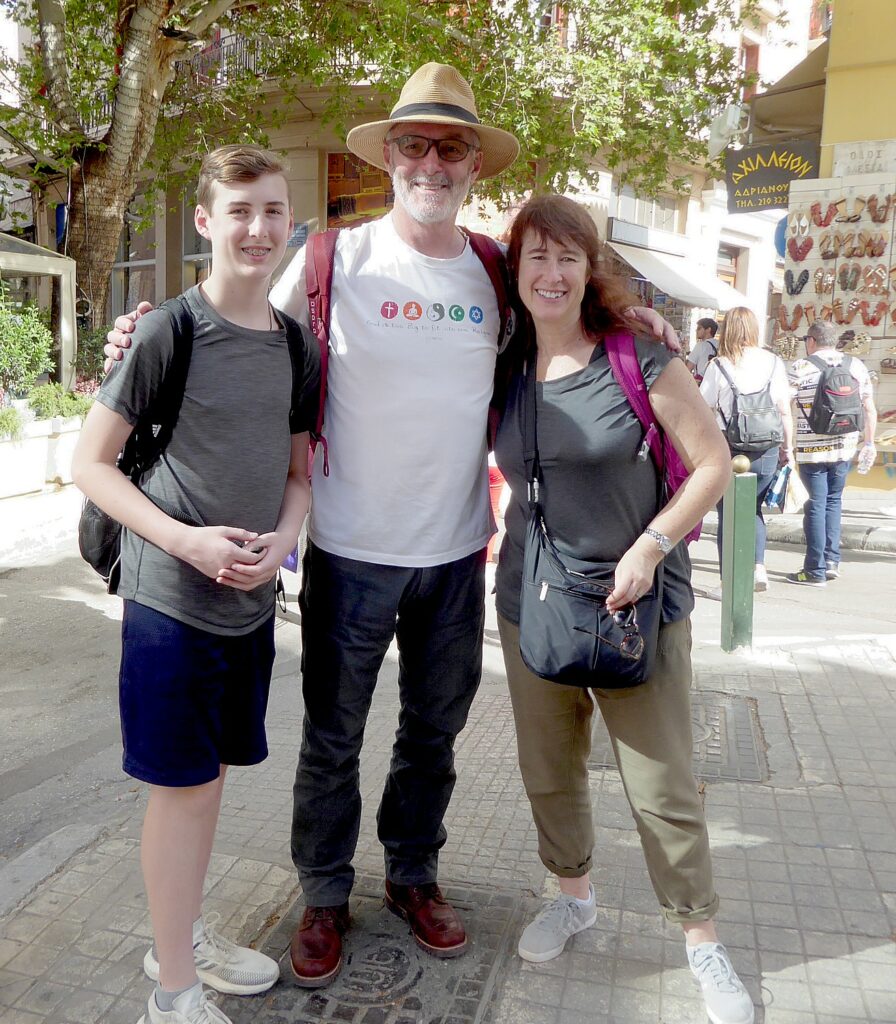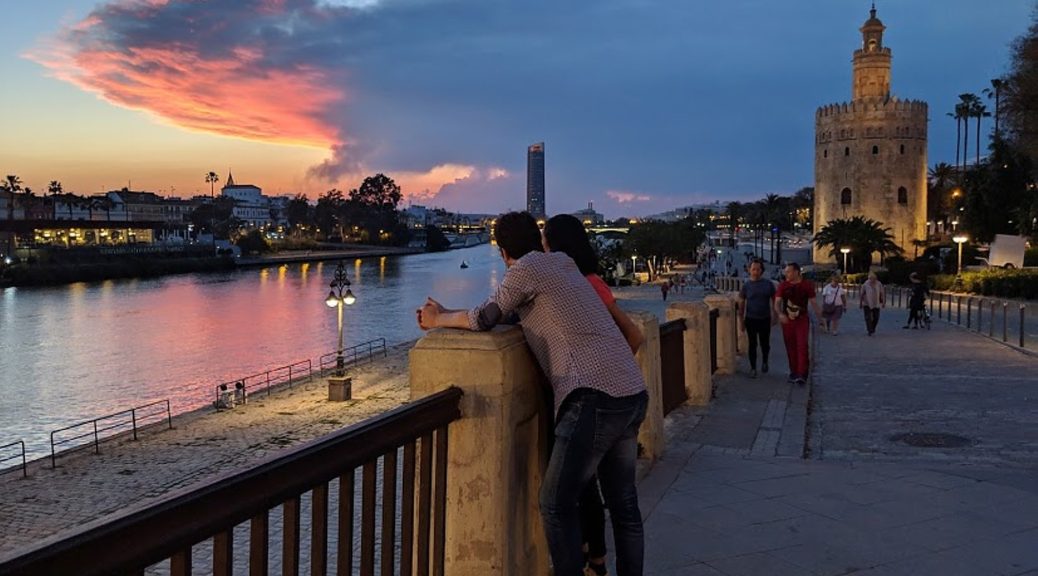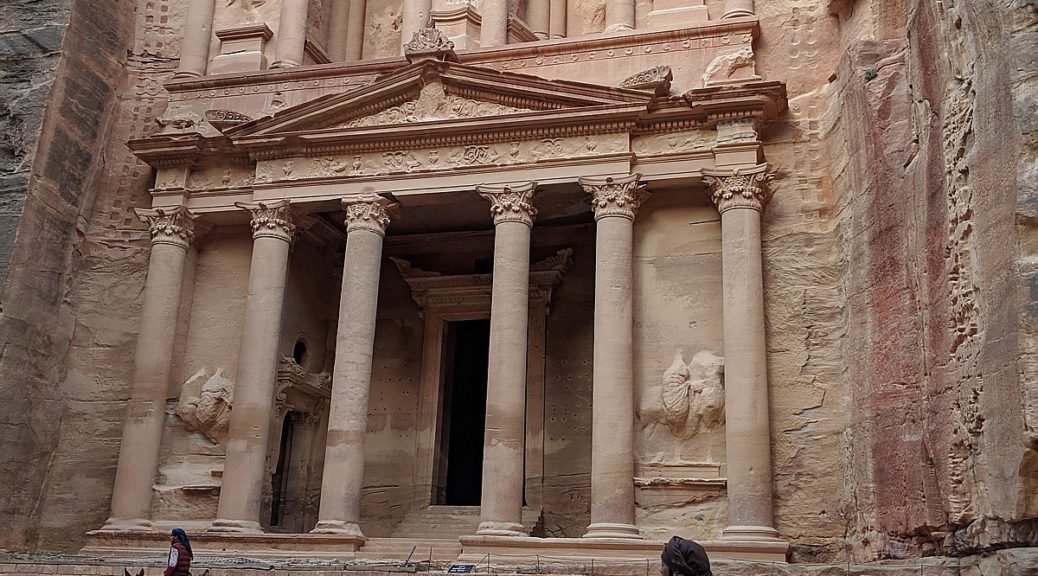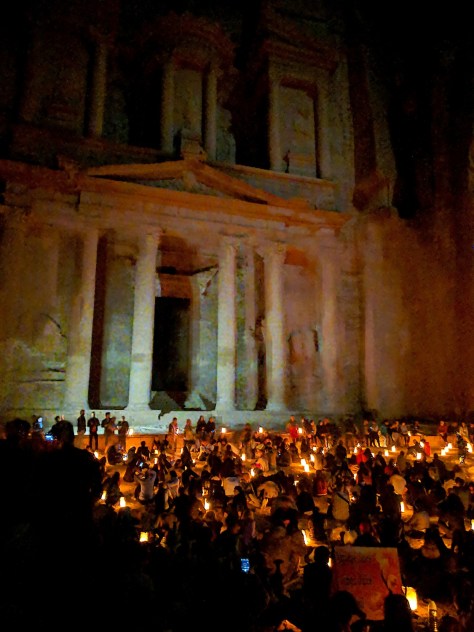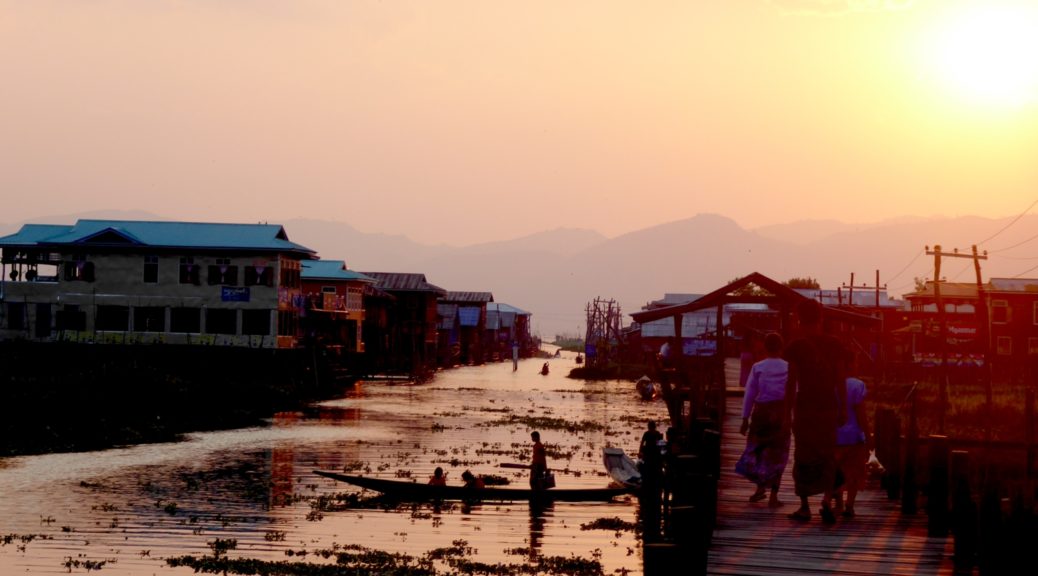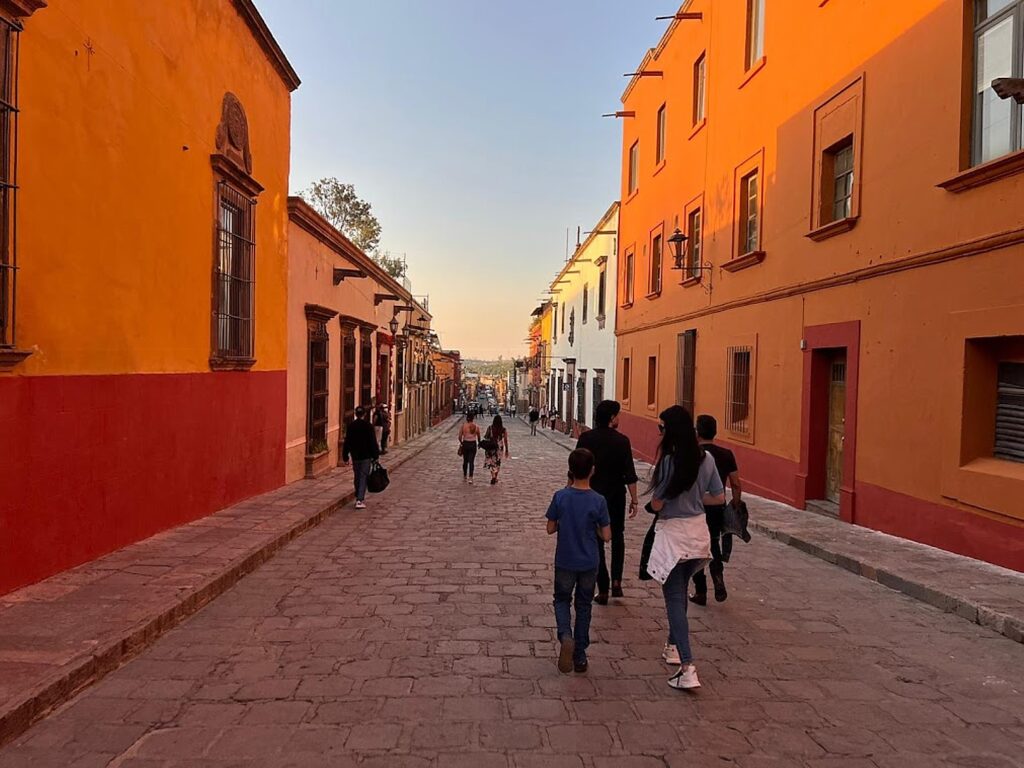
By Eric Leiberman and Sarah Falter, Travel Features Syndicate, goingplacesfarandnear.com
Eric and Sarah are on a 6-month around-the-world sabbatical, and are filing these dispatches periodically. Here’s their report after a month in Mexico before moving on to Asia.
We finally did it–rented out our house, packed a tiny sliver of our possessions into four packing cubes inside a large backpack, strapped on our water shoes and hit the road for the adventure of a lifetime–six months of uninterrupted travel! We have now been traveling together for exactly five weeks and we’re delighted to share that we still like each other!!
Setting off on our six-month, around-the-world sabbatical © Eric Leiberman/goingplacesfarandnear.com
After visiting our beloved family in LA and NY, we spent the first month of our trip traveling throughout Mexico.
We began in Mexico City (for a brief bit, then later returned), where the ridiculously long lists of food recommendations did not disappoint. Then to Oaxaca with our travel bestie Julie, where colorful winding streets all lead to delicious mole. We did an awesome Airbnb experience where we learned about all seven types of mole and that the labor intensive process + cost of ingredients dictates when they are consumed (for example verde every day after school, up through negro, which can take a week to prepare for special occasions like weddings). And we tried this very delicious treat in Oaxaca called a Tlayuda!?!? It’s like a giant pizza/crepe layered with beans, cheese, lettuce, meat, and then folded and roasted over an open charcoal oven (enjoyed with a multitude of salsas). And speaking of SALSA, Sarahs new obsession is salsa macha. It’s a deep and bold, sharp and spicy salsa, and its made with crushed PEANUTS (kind of like the Bitchin’ sauce of salsa, IYKYK!)!? It is divine and we ordered it with pretty much every meal from that point forward.
Our food odyssey in Mexico © Eric Leiberman/goingplacesfarandnear.com

We’d come to learn that this sort of deep, bold and soulful flavor was uniquely Oaxacan, and was pervasive throughout their history, cuisine & art. They have a fascinating history of protest and human rights advocacy that permeates the art all throughout the city – from the large format street murals to the gallery walls in fine art museums. It is dark and expressive with lots of skulls, fire, protest depiction & political symbols. Learning more about this history brought new meaning to the intense flavors of mole and mezcal.
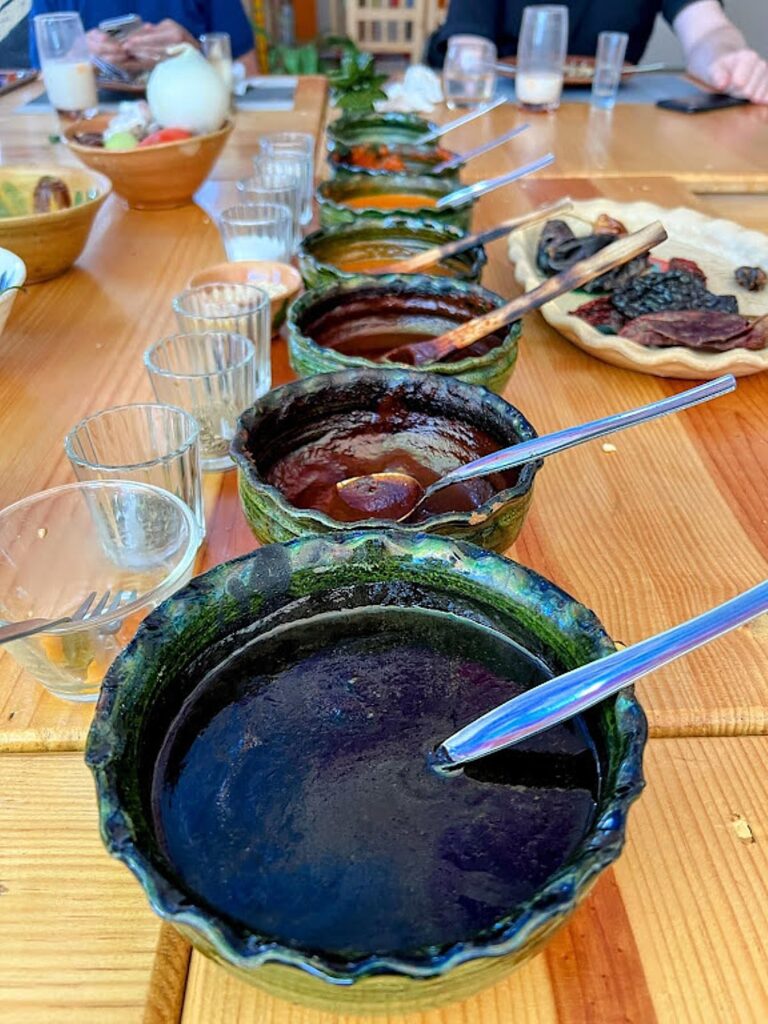
We continued our journey on a 7-hour drive almost entirely on mountain roads with dramatic switchbacks to the coast of Oaxaca (Eric drove and Sarah passed out on drowsy Dramamine). Over the next week, we made stops at three beach towns: Puerto Escondidio, Mazunte, and Playa Bocana. Puerto Escondido prevails for its cliff-like coast line and amazing street entertainment (imagine our surprise when a man with a guitar and an amp shows up on the beach, usually a nightmare scenario at any Bay Area park, and ends up providing the most perfect sunset vibes)!
Off beaten track beaches in Mexico © Eric Leiberman/goingplacesfarandnear.com
Mazunte gave us some good laughs because its “hippie” vibe is out of control and almost cartoonish; you’re weird if you actually wear shoes around town/on hikes, and if you don’t like acai and bulle proof coffee you need to get your ass out of there. But, thankfully, we (gladly) dabble in some aspects of the hippie lifestyle, so the vegan nomz, acai bowls & a two-hour (very stinky) yoga class were a welcome change-of-pace. Eric even bought a turquoise pendant (maybe a Buddhist symbol? We’re not sure; we’re posers) there that he wears most days now as a lucky charm 🙂
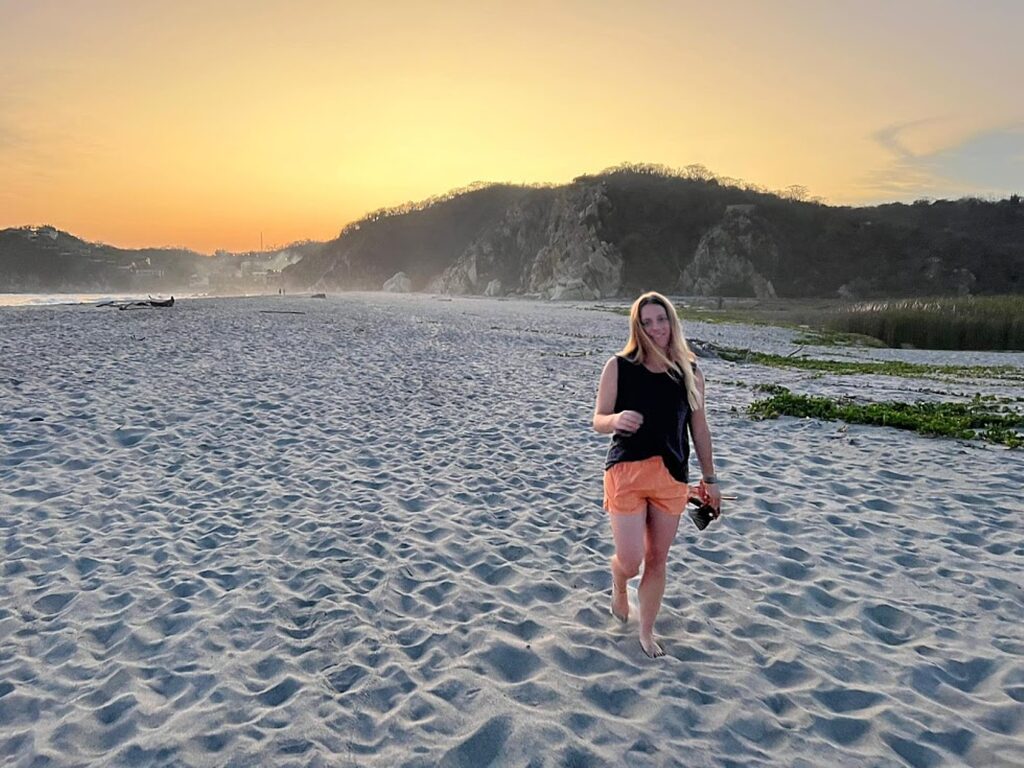
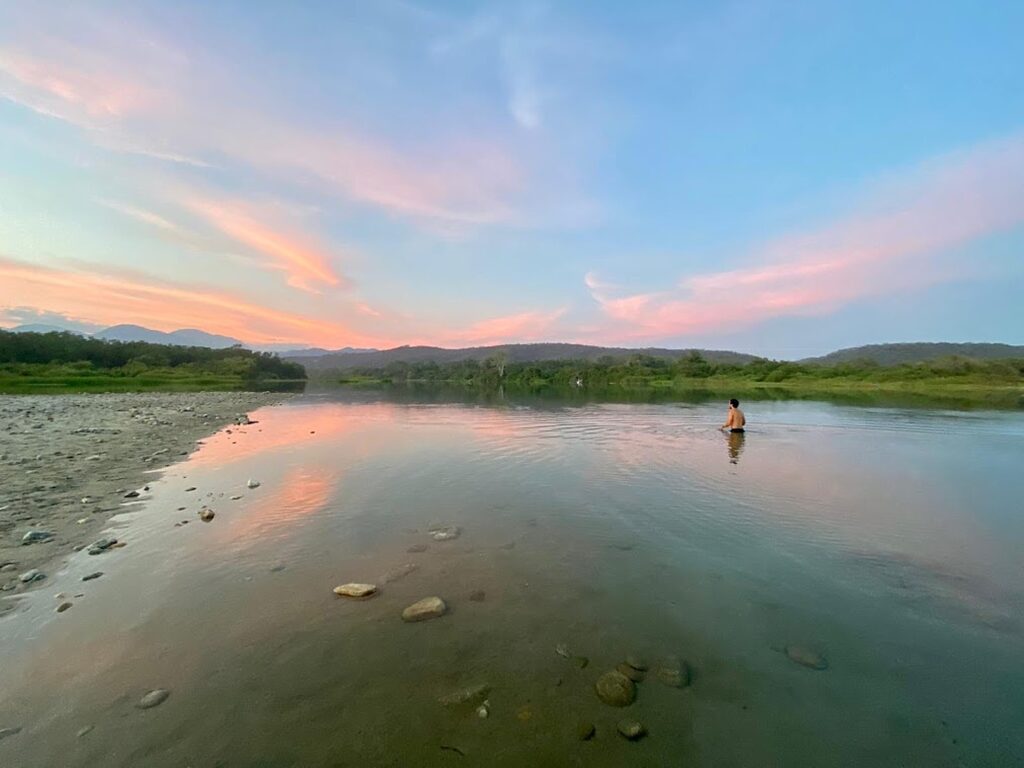
And the last stop on the Oaxacan beach tour was La Bocana; a true surprise gem. It is a tiny town with just two restaurants, one boutique hotel and several local women who provide mud scrubs (with the special mud from this beach) daily.
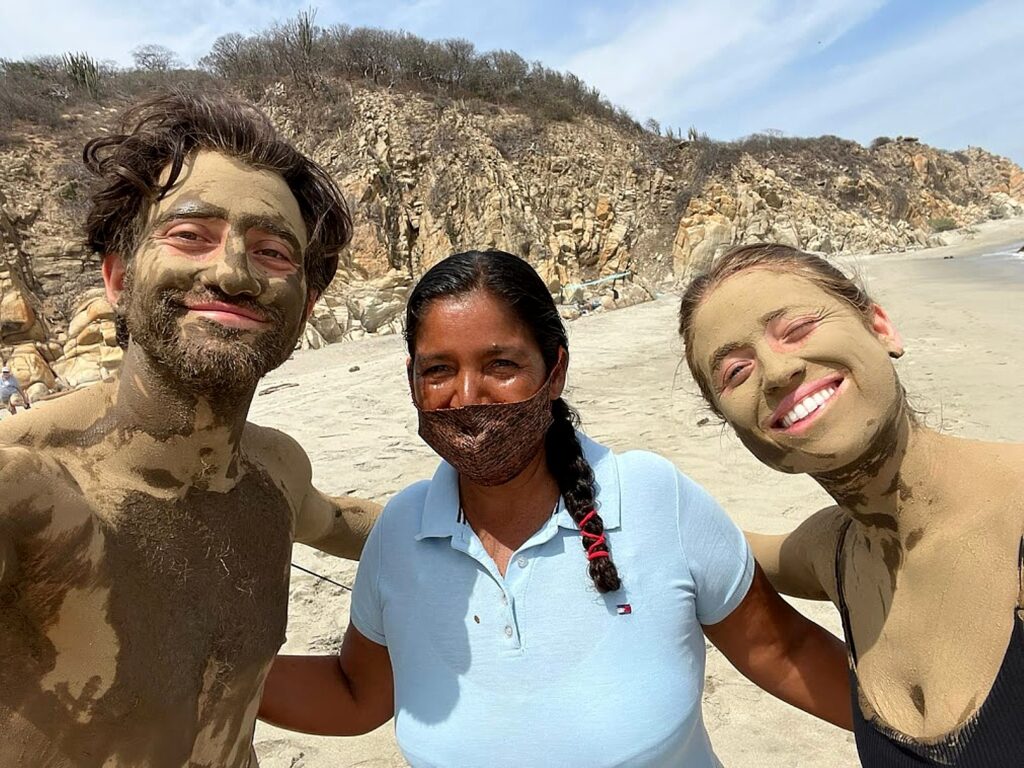
Our cute little airbnb was a mere 50 yards from a spectacular long stretch of beach that felt like it was all ours. And when we started exploring the beach, we’d come to discover that a 15-minute walk up the beach led to the intersection of a gorgeous river with the ocean; which was utterly picturesque and made for a best-of-both-worlds situation of enjoying the beach while swimming in the calm of the river. During our short stay at La Bocana beach, we made both sunset and sunrise pilgrimages to this beautiful spot. Anyone who knows Eric knows he can’t resist a sunrise/sunset swim. And we ate delicious camarones a la diabla (shrimp in spicy sauce) and fresh langosta from that river basically every meal there, happily.
Our food odyssey in Mexico © Eric Leiberman/goingplacesfarandnear.com
The return to Mexico City was a happy one because we were excited to spend more time exploring and Sarah’s mom Marci came to join for a week! Major highlights included visiting a Luis Barragan house, discovering more neighborhoods/parks & going to the Mexico vs. El Salvador World Cup qualifying futbol game (where we tried nearly every food item sold in the stadium.. even Cup of Noodles with shrimp & hot sauce which yes, is cold and soggy by the time they sell it to you at your seat!)
Enjoying the Mexico vs. El Salvador World Cup qualifying futbol game © Eric Leiberman/goingplacesfarandnear.com
Another gem we discovered in Mexico City is the weekly shut down of major streets on Sundays (up to 50km we learned) to promote safe and uninterrupted biking/running/roller blading. We stumbled upon this by accident in our first CDMX stint, and were so excited to show Sarah’s mom! We went basically the entire route out to the big park, down to the neighborhood of Coyoacan, and back. Mexico City is truly as lovely and vibrant as everyone says it is. It’s like the best of both worlds of East and West Coast US cities; it has the serendipitous cosmopolitan feel of NYC with the wide open green spaces of LA/SF. Everyone is in love with Mexico City these days and it’s obvious why.
Last stop on the tour landed us in San Miguel de Allende, a shorter 3-4 hour drive from Mexico City. San Miguel is a very charming town, known for its colonial architecture which drew many artists in the 20th century. It’s a must to find a terrace to enjoy the sunset, taking in the gorgeous pink church and red rooftops while obliging every other couple’s request for a photo (Eric is a hot commodity because he takes multiple angles and never skimps on the portrait mode). Eric did finally succumb to the first round of food poisoning of the trip here (which is shocking given what he’d eaten in the previous 4+ weeks), though he recovered in a day and we’re happy to report that Sarah’s stomach of steel is still going strong (knock on wood).

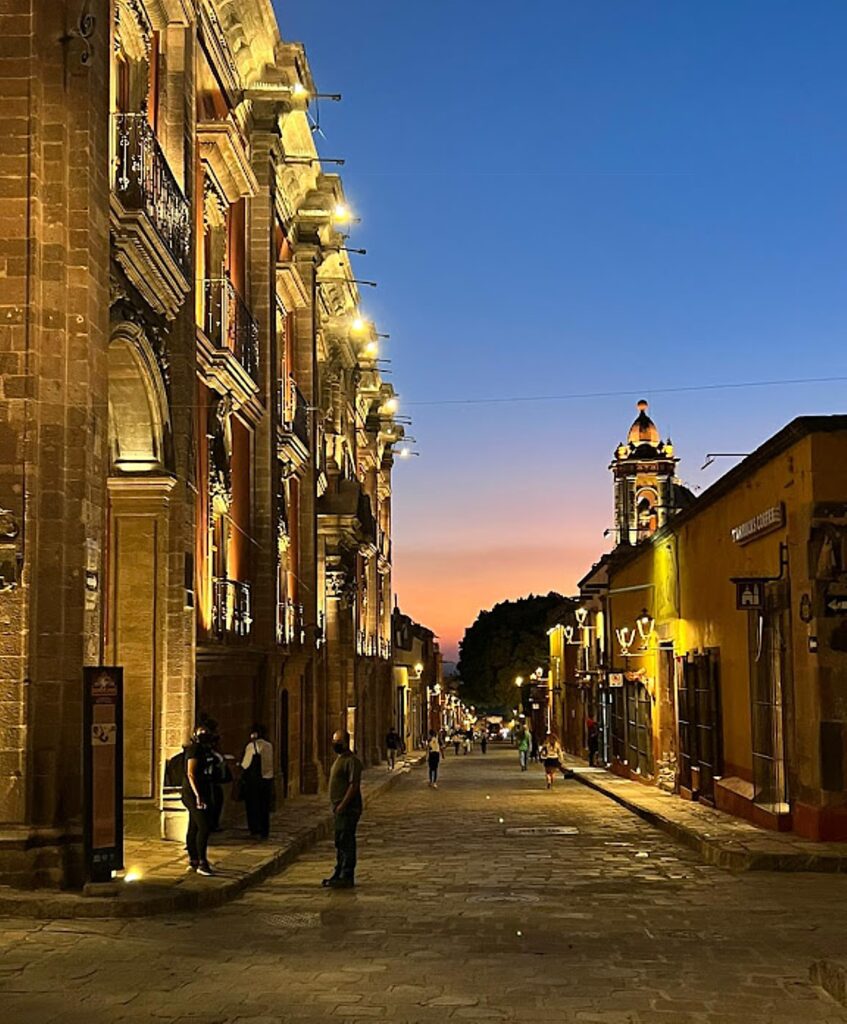

Eric and Sarah in San Miguel de Allende, get ready to continue their around-the-world odyssey in Asia.
At the present moment, we’re in Seoul after a failed attempt at Vietnam entry (and over 50 straight hours of travel), but were super stoked to begin the Asia chapter of our travels, where Sarah’s love for headbands and bucket hats is bound to flourish. It’s crazy and refreshing how “home” has become having each other, and our backpacks….
See also:
DISPATCH 1 FROM LIVING THE NOMADIC LIFE, A GLOBAL ODYSSEY: MEXICO
DISPATCH 2 FROM LIVING THE NOMADIC LIFE, A GLOBAL ODYSSEY: SOUTH KOREA TO VIETNAM
DISPATCH 3 FROM LIVING THE NOMADIC LIFE, A GLOBAL ODYSSEY: MALAYSIA TO CAMBODIA
DISPATCH 4 FROM LIVING THE NOMADIC LIFE, A GLOBAL ODYSSEY: INDONESIA
DISPATCH 5 FROM LIVING THE NOMADIC LIFE, A GLOBAL ODYSSEY: AUSTRALIA-NEW ZEALAND-CHILE
__________________________________
© 2022 Travel Features Syndicate, a division of Workstyles, Inc. All rights reserved. Visit goingplacesfarandnear.com, www.huffingtonpost.com/author/karen-rubin, and travelwritersmagazine.com/TravelFeaturesSyndicate/. Blogging at goingplacesnearandfar.wordpress.com and moralcompasstravel.info. Visit instagram.com/going_places_far_and_near and instagram.com/bigbackpacktraveler/ Send comments or questions to [email protected]. Tweet @TravelFeatures. ‘Like’ us at facebook.com/NewsPhotoFeatures
